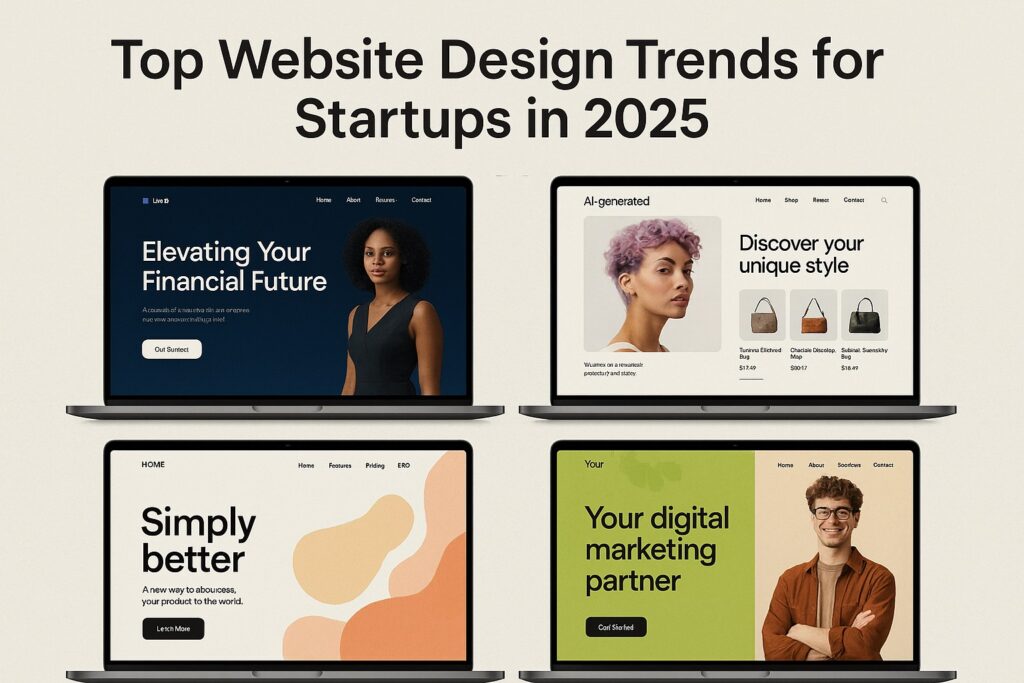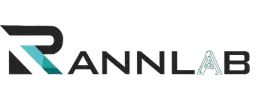Website Design Trends for Startups in 2025 | Future-Proof Your Brand
If you’re launching a startup in 2025, your website isn’t just a digital business card—it’s your handshake, your elevator pitch, and your storefront all rolled into one. Whether you’re building a SaaS platform, an IT consulting firm, or a tech-driven service, your site needs to do more than look good. It needs to work hard for you: attracting visitors, building trust, and turning interest into action.
So what does a high-performing startup website look like in 2025? Let’s dive into the trends that are shaping the future of web design—and how you can use them to build a site that’s fast, smart, and built to grow.

1. Minimalist Design with Purpose
Clean design isn’t just trendy—it’s practical. Startups are leaning into minimalist layouts that make it easy for users to focus on what matters.
- Whitespace isn’t wasted space—it’s breathing room. It helps guide the eye and makes your content easier to digest.
- Typography is doing more heavy lifting. Bold, readable fonts with personality help your brand stand out.
- Color choices are intentional. Most startups stick to neutral tones with one strong accent color to highlight calls to action.
The result? A site that feels calm, confident, and easy to navigate—exactly what your visitors want.
2. Lightning-Fast Performance with Jamstack
Nobody likes waiting for a page to load. In 2025, speed is everything—and Jamstack is the architecture helping startups deliver it.
- Pre-rendered pages load in a flash, keeping users engaged.
- Serverless functions handle backend tasks like form submissions without slowing things down.
- Content Delivery Networks make sure your site performs well no matter where your visitors are.
Fast websites don’t just feel better—they rank better, convert better, and leave a lasting impression.
3. Mobile-First and Voice-Optimized Interfaces
Let’s face it: most people will visit your site from their phone. That means mobile-first design isn’t optional—it’s essential.
- Responsive layouts adapt to any screen size, from phones to tablets to desktops.
- Voice search is becoming more common, especially for users on the go.
- Thumb-friendly navigation and sticky buttons make it easy to take action without zooming or scrolling endlessly.
If your site isn’t built for mobile, you’re missing out on a huge chunk of your audience.
4. AI-Powered Personalization
Startups are using AI to make their websites smarter—and more helpful.
- Dynamic content changes based on who’s visiting. First-time users might see an intro, while returning visitors get tailored suggestions.
- Chatbots offer instant answers and guide users through your services.
- Predictive UX helps users find what they need faster, without clicking around aimlessly.
It’s like having a digital concierge that knows your visitors and helps them feel at home.
5. Modular Design Systems
Startups move fast—and your website should keep up. Modular design systems make it easy to build, update, and scale without starting from scratch.
- Reusable components like buttons, cards, and forms save time and keep things consistent.
- Design tokens ensure your colors, fonts, and spacing stay on-brand.
- Headless CMS platforms let you manage content separately from design, so your team can work more efficiently.
It’s a smarter way to build—and it grows with you.
6. Trust Signals and Visual Proof
People don’t buy from websites—they buy from brands they trust. Your site should make visitors feel confident from the moment they land.
| Element | What It Shows |
|---|---|
| Client logos | You’ve worked with real companies. |
| Testimonials | Others have had great experiences. |
| Case studies | You deliver results. |
| Certifications | You know your stuff. |
| Security badges | Their data is safe with you. |
These aren’t just nice-to-haves—they’re essential for building credibility.
7. UX-Driven Navigation and Microinteractions
Good user experience is invisible—but powerful. It’s the difference between a site that feels clunky and one that feels effortless.
- Sticky headers keep navigation within reach.
- Microinteractions—like hover effects and button animations—add polish and feedback.
- Progressive disclosure means you don’t overwhelm users with too much info at once.
When your site feels intuitive, people stick around longer—and they’re more likely to take action.
💡 Final Thoughts
In 2025, your website needs to be more than just pretty—it needs to be purposeful. By embracing these top website design trends for startups, you’ll build a site that’s fast, flexible, and focused on your users.
And if you’re not sure where to start? That’s where we come in. Our IT consulting team specializes in building high-performing websites that help startups grow. Let’s build something amazing together

